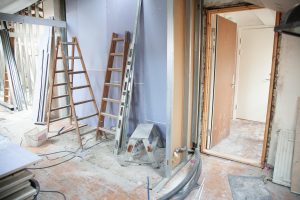Are you considering a home addition in the great state of Texas? Homeowners across the Lone Star State often contemplate expanding their living spaces to accommodate growing families, add extra rooms, or increase the value of their properties. However, one common question that arises is: How long do home additions in Texas take? The answer can vary based on several factors that influence the project’s schedule. In this blog, we’ll explore these factors, discuss the phases of a home addition in project, and offer tips on how to expedite the process.
Factors That Can Affect the Schedule of a Home Addition Project
- Size and Complexity: The size and complexity of your home addition project play a significant role in determining the duration. A simple room addition might take less time compared to a multifaceted project, such as a two-story addition or adding a full kitchen and bathroom.
- Weather Conditions: Texas is known for its diverse climate. Adverse weather conditions, such as intense heat or unexpected storms, can disrupt construction schedules. It’s crucial to consider the region’s climate when planning your home additions in Texas
- Permitting and Approvals: The permitting and approval process can introduce delays. Local authorities require homeowners to obtain necessary permits before starting construction. Delays may occur if there are complications during the permitting stage.
- Architectural and Design Details: The time spent on the design and architectural phases can impact the project timeline. Comprehensive planning, including precise blueprints and design details, can help streamline the construction process.
- Material Availability: The availability of construction materials can also influence the schedule. Supply chain disruptions, high demand, or specific material requirements can lead to longer lead times for certain items.

Phases of a Home Addition in Texas Project
Planning
Planning is the crucial initial phase of any home additions in Texas project. During this stage, homeowners work closely with architects, designers, and contractors to develop detailed plans for their project. This includes discussing goals, budget constraints, and any specific design requirements. The planning phase can take several weeks to several months, depending on project complexity.
Budgeting
Once you have a clear plan, budgeting is the next step. Homeowners should have a well-defined budget that includes all expected costs. Budgeting can take time as you gather quotes, finalize your financial plan, and secure necessary funding.
Demolition
Demolition is where the physical work begins. In this stage, existing structures are torn down or modified to make way for your new addition. The duration varies depending on the scope of demolition. For example, removing a small room may take a few days, while a more extensive demolition can last several weeks.
Construction
The construction phase is the most time-consuming and may extend over several months, depending on the project’s size and complexity. Skilled contractors will work meticulously to ensure that the addition aligns with your design and budget.
Finishing
The finishing stage involves adding the final touches to your home addition. This includes electrical work, plumbing, painting, and any other elements required to make the new space functional and aesthetically pleasing. Completion times depend on the complexity of these finishing touches.
How To Make Home Additions Move Faster
- Hire an Experienced Team: Select a team of professionals with experience in home additions, like architects, builders, and contractors who have a track record of efficient project delivery.
- Plan Carefully: Thorough planning reduces the likelihood of delays. Ensure that your design and budget are well-defined before beginning the project.
- Optimize Material Procurement: Work with your contractor to identify materials in advance and order them in a timely manner to prevent delays due to material shortages.
- Regular Communication: Maintain open communication with your project team to address any issues promptly and avoid potential bottlenecks.
- Flexible Scheduling: Be prepared for possible delays and ensure your project schedule has some flexibility to accommodate unexpected interruptions.
- Work with Local Professionals: Local experts are familiar with the area’s permitting processes and local construction requirements, which can streamline the project.
Tips for Homeowners
When considering a home addition in Texas, teamwork and efficiency are essential. Teamwork Home Designs is a trusted company known for its commitment to making your home addition dreams come true. They offer a range of design and construction services to ensure that your project proceeds as smoothly as possible. Their experienced professionals are well-versed in local regulations and can help navigate the permitting process.
In conclusion, the time it takes to complete home additions in Texas can vary based on multiple factors. By understanding these elements, working closely with a qualified team, and adopting strategies to enhance efficiency, you can make your home addition in Texas a success. Whether you’re adding a new bedroom, expanding your kitchen, or creating the perfect home office, careful planning and execution can help bring your vision to life.

